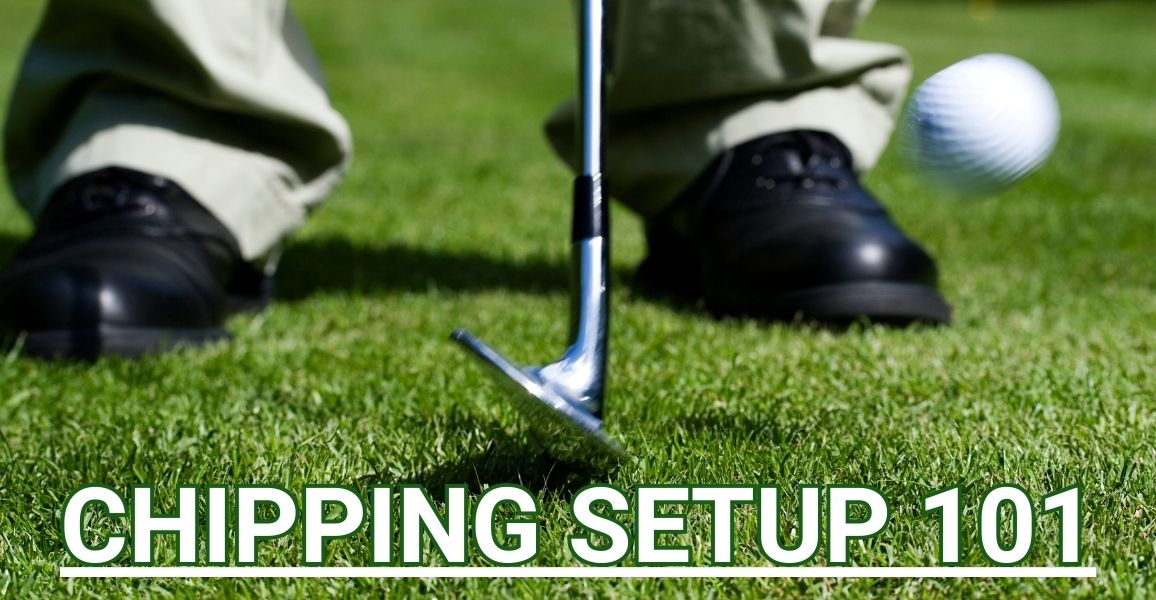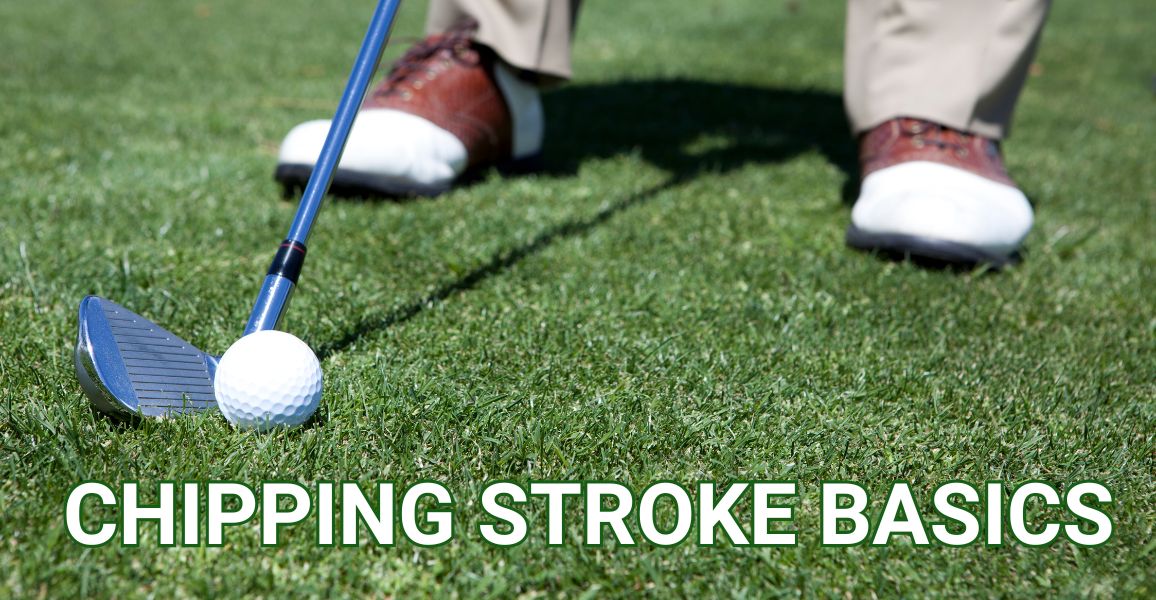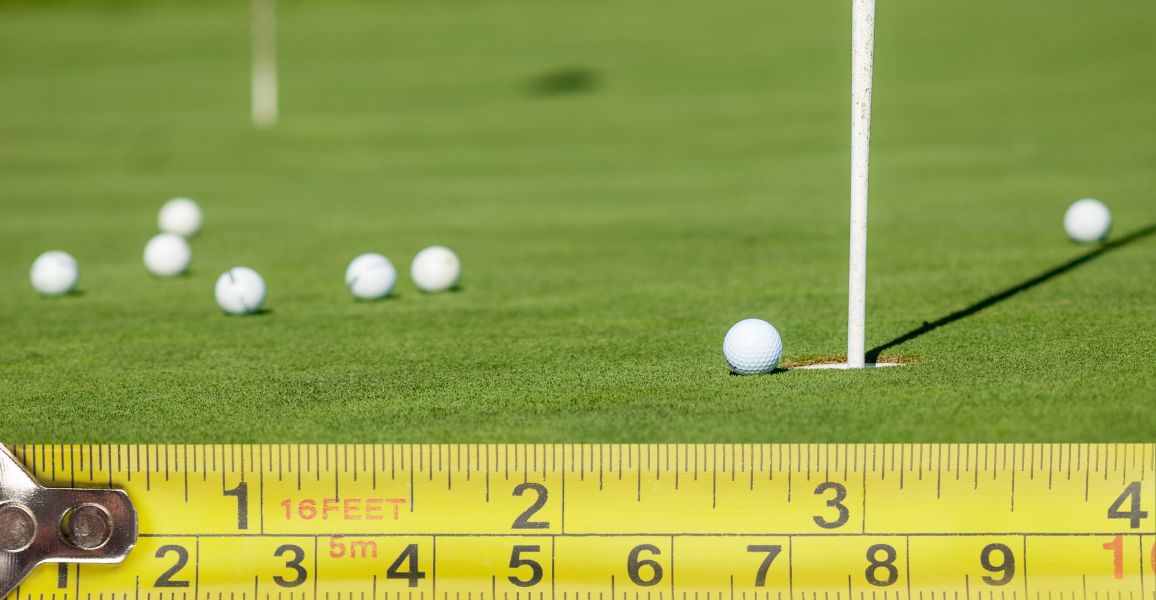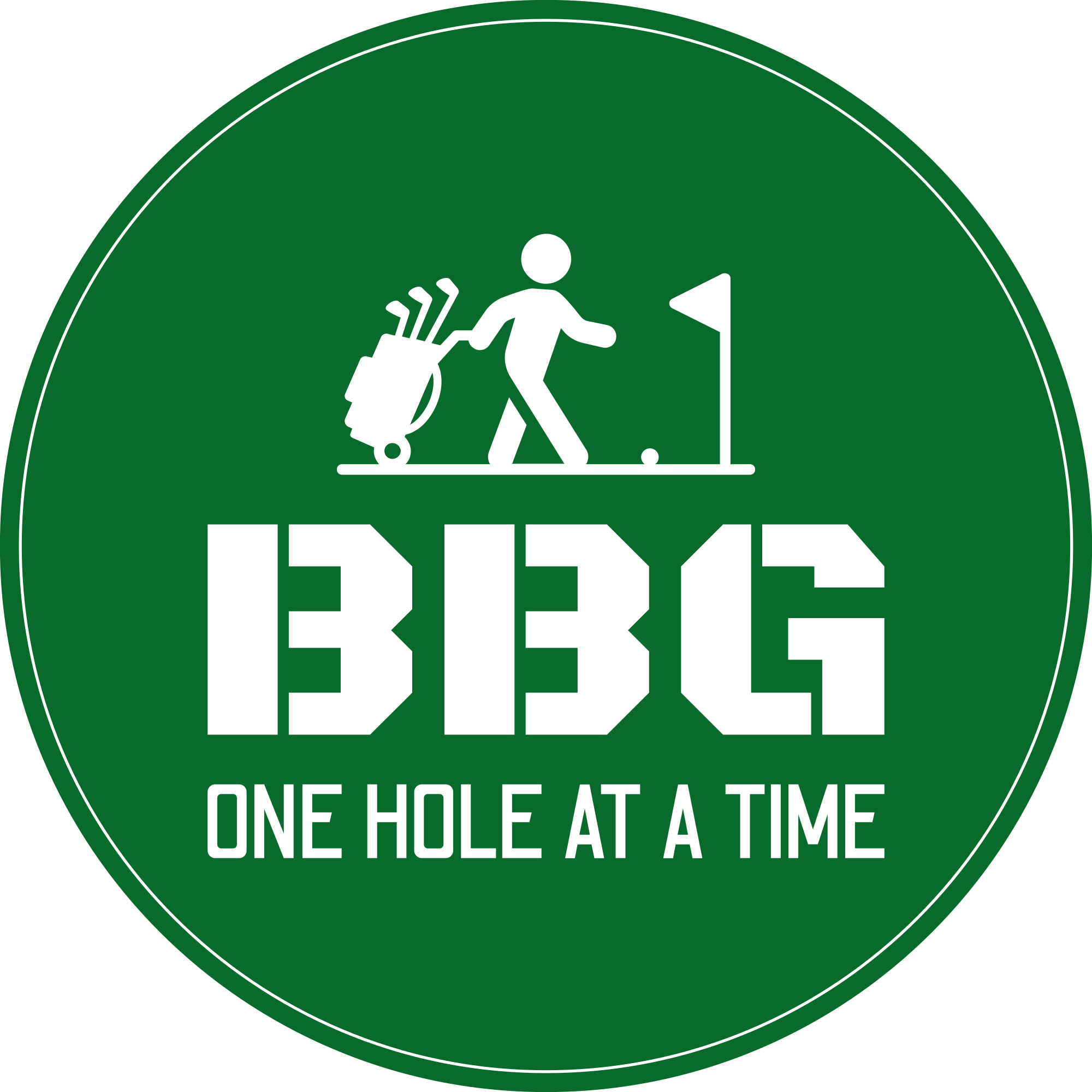One of the easiest shots in golf is chipping. It should be the easiest. It’s like throwing a ball or pitching pennies. It’s easy. And I struggle with that, and the struggle is all mental. – Nick Saban
Nick says chipping should be easy, which it should be, but since you’re reading this right now, it’s probably not easy for you.
This doesn’t have to be bad, because by the end of this post, you will have all the information you need to become a great chipper.
Getting more ups and downs around the green, or even some occasional chip-ins, will improve your scoring.
Below is a list of golf-chipping tips and tricks that will have you rattling the flag stick from around the green in no time.
Enjoy!
What Is Chipping? Is Pitching the Same Thing?
Many golfers often confuse chipping with pitching or half-wedge shots. It isn’t a big deal, but they are two different shots.
When you’re around the green, a chip shot rolls along toward the hole, ideally.
During a chip shot, the ball will travel further across the green than in the air.
You can hit this kind of shot with a range of clubs.
Most golfers use clubs like the 8 iron, 9 iron, or pitching wedge. Others use higher-lofted wedges and even hybrids that have a high loft.
The pitch shot is different as it happens further away from the green.
During a pitch shot, the ball will travel further in the air and ideally land close to the hole.
Golfers would typically rely on higher lofted clubs and spin to get the ball to stop after impact.
Any short approach shots into the green will be pitch shots, and shots just around the green will be chip shots.
The good news is that the setup for both shots is almost identical.
Working On Your Setup

Your chipping setup should be straightforward and easy to repeat.
When you think about it, there isn’t much to it, considering you barely swing your golf club.
The result you want from your chip shot is to strike the ball and then the turf with a slightly descending blow.
Work On Your Stance For Chipping
To become a better chipper, you should always begin with your stance.
Your stance should be narrow, which will help you easily rotate through the shot.
A wide stance makes it harder to rotate all the way through.
It would help if you also had a slightly open stance by angling your lead foot toward the target, which will also help with your follow-through and finish.
The last ingredient for a perfect chipping stance is to have more weight on your lead foot.
You should aim to have around 60-70% of your weight on this foot; any more than that, and you’re at risk of falling over!
Work On Your Chipping Posture
Good posture on the golf course can save you from unwanted back pain and terrible shots.
Regarding your posture, it’s vital that you keep your back straight and don’t become hunched over.
Hunching over the ball when chipping can lead to inconsistent shots.
Instead, you want to feel like your arms are swinging on a pendulum and to achieve this, you have to lean forward slightly, letting your arms hang straight down.
This setup will help your arms swing freely back and through the ball.
Watch Your Head Position
Since chipping is such a small movement requiring precision, throwing it off doesn’t take much.
One of the main culprits that ruin golfer’s chip shots is their head position.
Throughout the stroke, your head should stay fixed in the same position.
This will ensure a better chance of hitting the ball at the required angle on the downswing.
If your head moves back on your backswing, it could result in a less aggressive angle of attack and produce a high-lofted shot at best or a thinned strike at worst.
Similarly, if your head position is too far forward, it can make your attack steeper, meaning the golf ball can end up coming off the clubface hotter than you’d like.
Work On Your Golf Chipping Stroke

Once you’re confident your posture and setup are correct, you can work on perfecting your golf chipping technique.
Even though the chipping stroke doesn’t require a tone of movement, it doesn’t mean there isn’t a lot to it.
Below is a list of the fundamentals you should focus on that should have you scaring the hole and shaving some strokes off your next round.
Your Lead Arm Is In Control For Chipping
Your lead arm is in control regarding a chip shot.
Feeling that this arm is one with the club shaft, which will make for a smooth and consistent stroke.
Regarding your golf chipping technique, we want to eliminate any flick in the wrists.
Flicking your wrists during a chip shot will result in more inconsistent shots.
Remember, you want to feel like your arms are swinging on a pendulum with your shoulders and upper body doing most of the work.
Work On Your Chipping Tempo
Finding the right tempo or chipping motion for your chip shots is crucial, and it will vary depending on the kind of shot you want to hit.
You want to swing smoothly and strike the golf ball solidly for a standard chip shot.
Chipping requires a delicate touch and is similar to putting in that way. You let the club do the work when it comes to a putting stroke.
The club almost always makes contact with the ball at the same speed regardless of whether it’s a 3-foot or 15-foot putt.
The only change is how far the club travels on the backswing.
Apply the same principle to your chip shots.
If your tempo is too fast, it could result in you flying past the hole and off the green too slow, and it will end up just ahead of you.
Work On Keeping Your Clubface Square To Target When Chipping
When your clubface is square to the target, it helps with direction and distance control.
The clubface will not remain square to the target if you use your wrists too much or try to help the ball reach the target and into the air.
Maintaining a square clubface will result in a more consistent chip shot.
Work On Your Grip For Golf Chipping
Over the years, I’ve seen many golfers use a range of chipping grips; some grip the club as they would with a putting stroke, others use a standard grip, and some have a unique grip specifically for their chip shot.
It’s a case of whatever works… works!
One thing, though, that you need to become better at chipping is a relaxed grip.
A relaxed grip will give you a better feel, resulting in more consistent shots.
When you grip a club too tightly, you lose your sense of feel, and the club head will struggle to make an impact with the golf ball naturally.
Everything from your shoulders to your hands should be relaxed and flow freely.
Get Your Mindset Right Before Your Chip Shot

Like every other golf shot, your chip shot requires a solid mental game.
Most golfers fail at chipping because they don’t swing confidently or put their foot on the brakes on the downswing.
When you do this, you’ll catch the turf heavy or hop your golf ball a few yards further.
When approaching the shot, get your mindset right by taking a few quick practice swings and focusing on brushing the grass with the club.
Try not to bounce your club off the grass; you’re just trying to sweep the ground and let the club do the rest.
Have confidence in your swing, and follow through on your downswing with 100% commitment to the shot.
After all, golf is a simple game that golfers make hard!
Get Confident With One Club
Hitting consistent chip shots with one club is better than hitting inconsistent shots with 3-4 wedges.
You should stick to one club.
Sure, you see pro golfers or Youtubers hitting a bunch of shots and using a bunch of wedges, but they practice almost daily.
They have years of experience playing at a high level and have their distance control down to a tee.
Most weekend golfers don’t have that time, experience, or skills yet, so it’s best to stick to one club.
Then, once you are more confident in your short game, you can add another club.
Practice Your Distance Control When Chipping

Controlling your chipping distance will be the game changer. However, there is only one way you can learn to do this: practicing.
You can do this by setting checkpoints on your backswing.
You get 10 balls, hit a few with a short swing, and clock the distance they all went on average.
Then move to the next checkpoint and do the same until you’ve worked your way to the back.
For example, when the club face reaches knee height, that could be your final checkpoint, and when then halfway is another, and then well… you get the idea.
Hitting Different Chip Shots
If you haven’t worked on all the above or are not confident in your standard chip shot, you shouldn’t be getting too far ahead of yourself.
There are two ways you can hit some different chip shots. The first way is changing your ball position, and the second is opening or closing your club face.
Changing Your Ball Position
When you change your golf ball position, you essentially change the angle of attack for the clubface on impact.
Moving the ball slightly forward in your stance so it’s closer to the hole will tend to launch at a higher angle.
It shouldn’t roll as far as your stock shot on its descent.
Best used on fast greens, when hitting a chip shot onto a downslope, or if something is in your way.
Then, if your ball position is further back in your stance away from the hole, your golf ball trajectory would have a lower ball flight.
This kind of shot will be useful if you have a lot of green to work with.
By changing your golf ball position, you now have 3 different chip shots to choose from.
Opening And Closing Your Club Face
This one is straightforward, and you may already know this.
Opening your club face during a chip shot will result in the golf ball launching higher into the air and not having as much roll on it once it lands.
Then, when you close the face, it will have lower ball flight and run along the green further than your stock shot.
If you combine changing the angle of your club face and golf ball position, you now have an arsenal of chip shots to pick from.
Always try to find and stick to which shots work best for you, and try them out on the practice green before you try them during your round.
